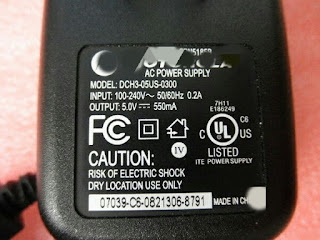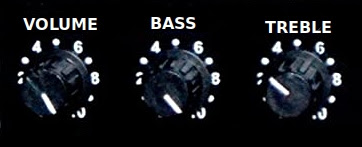West Bengal PSC Previous Year Physics Questions with Answers (Part- 3)
In this post we list and solve the previous year Physics questions of West Bengal Public Service Commission (PSC WB). It is the Part-3 of this series.
We arrange the questions topic wise.
Actually this Physics series is the part of WBPSC Previous Year SCIENCE series.
Atomic Nucleus
Q. Which of the following is most harmful for human being ?
[WBPSC Miscellaneous Exam- 2012 (1st)]
- ɑ - Particle
- β - Particle
- γ - rays
- Light rays
C. γ - rays
Explanation: Gamma (γ) rays are generally considered the most dangerous type of radiation to living matter. It has large penetrating power compare to alpha (ɑ) and (β) particle.
Q. Which of the following radiations have the maximum penetrating power?
[WBPSC Miscellaneous Exam- 2012 (2nd)]
- ɑ -rays
- β -rays
- γ - rays
- Light rays
C. γ - rays
Explanation: If we arrange the given radiations according to the penetrating power, it will be as following:
Light rays<ɑ-rays<β-rays<γ-rays
Q. The energy radiated by the Sun is because of
[WBCS Preliminary- 2015]
- Nuclear Fusion
- Nuclear fission
- Radioactive decay
- Photo-electric effect
A. Nuclear Fusion
Explanation:
- Nuclear Fusion: Nuclear fusion is a nuclear reaction where two or more lighter atomic nuclei are combined and form a different new nuclei.
In this reaction huge amount of energy is released. This process are taken place in the Sun, stars, hydrogen bomb etc.
- Nuclear Fission: In nuclear fission, a large nuclei is bombarded with nuclear particle and hence split into two or more smaller nuclei and release energy.
This type of reaction is used Atom bomb, nuclear reactor. - Radioactive decay: Radioactive decay is a process by which an unstable atomic nucleus emit alpha (ɑ) particle, beta (β) particle and gamma (γ) rays for gaining stability.
- Photo-electric effect: Sometimes electron are ejected from a metal when light rays incident on that metal. This phenomenon is known as photo-electric effect.
Q. X-rays are
[WBCS Preliminary- 2015]
- electromagnetic radiations of very short wave length
- Beams of electron
- electromagnetic radiation of very long wave length
- visible to the naked eye
A. electromagnetic radiation of very short wave length
Explanation: X-rays is an electromagnetic wave of high frequency, very short wave length and invisible to the naked eye.
Q. The material used for safety from nuclear radiation is
[WBCS Preliminary- 2017]
- Copper
- Platinum
- Iron
- Lead
D.Lead
Explanation: Generally Lead is used for safety from nuclear radiation.
Heat and Temperature
Q. A temperature of 300℃ corresponds to an absolute temperature in Kelvin unit of
[WBPSC Miscellaneous Exam- 2012 (2nd)]
- 27
- -27
- 523
- 573
D. 573
Explanation: For converting degree Celsius into Kelvin, we have to add 273 with the numerical value of degree Celsius.
300℃=(300+273)K=573K
Q. Which one of hte following is world's most heat resistant material?
[WBPSC Miscellaneous Exam- 2018]
- Hafnium Carbide (Hfc)
- Nano Material (NM)
- Titanium (TM)
- None of the above
A. Hafnium Carbide (Hfc)
Explanation: Hafnium Carbide (Hfc) is the most heat resistant material Hcf melted at 3958℃.
Q. If there were no atmosphere, the earth would have been
[WBCS Preliminary- 2015]
- slightly hot
- slightly cold
- Very hot
- Very cold
D. Very cold
Explanation: If there were no atmosphere around the earth, the earth would have been very cold because there would not have no greenhouse gas. In atmosphere, greenhouse gas trap the heat energy.
Q. At what temperature, Celsius and Fahrenheit readings will be same?
[WBCS Preliminary- 2015]
- +40°
- +20°
- -20°
- -40°
D. -40
Explanation: Let, at x° the Celsius and Fahrenheit readings are same.
We know that,
so, (x/5)=(x-32)/9
Therefore, (-40)℃=(-40)℉
Q. Good absorbers of heat are
[WBCS Preliminary- 2019]
- poor emitters
- non-emitters
- good emitters
- highly polished
C. good emitters
Explanation: According to Kirchhoff's radiation law, a good absorber of heat is good emitters of heat.
Q. Ventilators are provided at the top of the room
[WBCS Preliminary- 2019]
- to bring oxygen for breathing.
- so that sunlight may enter the room.
- to maintain convectional currents to keep the air fresh in the room.
- to provide an outlet for carbon dioxide.
C. to maintain convectional currents to keep the air fresh in the room.
Explanation: If air is heated up it expands and becomes lighter and goes up. Cold air is comparatively heavier and comes down.
Ventilators are provided at the top of the room so that warm air of the room which will go up can easily get out of the room. When warm air goes out of the room through the ventilator, cold air comes in the room through window.
If material heated up and goes up; cold materials come down. And this process continue to spread the heat, the process is called convection.
Q. The freezing chest in refrigerator is kept near the top because
[WBCS Preliminary- 2021]
- It is convenient to use.
- it reduces cost.
- it cools the remaining space by the process of conduction.
- convection currents are set up.
D. convection currents are set up
Explanation: Transmission of heat through air, water is taken place by convection process.
In convection process, warm material heats up and becomes lighter and goes up.
Similarly, cold materials, comparatively heavier, comes down.
Above two process happen until the system reaches the equilibrium.
The freezing chest in refrigerator is kept near the top so that the heavier cold air come down (purpose of refrigerator is to cool the substance) and convection currents (flow) set up.
Change of State of Matter
Q. Pressure cooker works on the principle
[WBPSC Miscellaneous Exam- 2012 (2nd)]
- Boiling point increases with the increase of pressure
- Boiling point decreases with the increase of pressure
- Boiling point increases with the decrease of pressure
- None of the above
A. Boiling point increases with the increase of pressure
Explanation: In pressure, the lid is tightly closed so that the pressure inside the cooker can increase.
Boiling point increases with the increase of pressure. Hence, material inside the pressure cooker is cooked in higher temperature and cooking time is reduce.
Q. The immersed portion of a piece of pure ice floating in water is
[WBCS Preliminary- 2017]
- (8/9)th of its volume
- (9/10)th of its volume
- (10/11)th of its volume
- (11/12)th of its volume
D. (11/12)th of its volume
Explanation: If 11cm3 water turn into ice, the volume of ice will be 12cm3.
One thing should be noted here is that the mass of the ice and water would not be changed.
So, using Archimedes' Principle, we can say, if 11cm3 of 12cm3 ice immersed, the ice float. Therefore, immersed portion of ice in water is (11/12)th of its volume.
Q. If we add salt to pure water, its boiling point will
- increase
- decrease
- remain same
- None of the above
A. increase
Explanation: Generally, impurities in the solution increase the boiling point.
WBPSC Previous Year Physics Question with Answers Part-1
WBPSC Previous Year Physics Question with Answers Part-2
WBPSC Previous Year Physics Questions with Answers Part-4
WBPSC Previous Year Computer Question with Solution
WBPSC Previous Year SCIENCE Series
Thank You, Wish You Meet Your Goal







Comments
Post a Comment